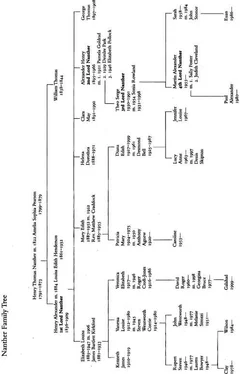If he couldn’t replace him, Henry had found a seemingly adequate substitute for Hamilton in Barnabus Couch, another physician he appears to have met while both were working at the Western General Dispensary. Letters from Couch and copies of letters Henry wrote to Couch, were carefully preserved in the trunk. But whereas Hamilton is often referred to as ‘my friend Hamilton’ or ‘RH’ and even once as ‘dear old Hamilton’, Couch gets only his bare surname. The same applies to Lewis Fetter, another medical man Henry knew and occasionally corresponded with.
The composition of Queen Victoria’s Medical Household seems extravagant today. Three Physicians-in-Ordinary and three Surgeons-in-Ordinary were in attendance and all were both consultants to the Queen and her general practitioners, while the senior physician was styled Head of the Medical Department and the senior surgeon Sergeant Surgeon.
Ranked below them were the Physicians and Surgeons Extraordinary. If they did well and found favour with the Queen they were promoted to in-Ordinary while those among the in-Ordinary who became unfit for the task through age or ill-health reverted to Extraordinary. Besides these, the great medical army included obstetricians, ear and eye specialists and apothecaries. These last were more like general practitioners than dispensers of drugs. Some of them, Apothecaries to the Household, took care of the health of everyone outside the royal family, while Apothecaries to the Person attended the Queen and any members of the family who might be staying with her. Some of these people were at Windsor, some at Balmoral and others at Osborne. Henry’s position among them was, from the first, peculiar.
The Queen appointed him Physician Extraordinary in 1879. Most of her other doctors were in permanent residence but Henry, though sometimes staying a few days at Windsor and several times travelling with her to the Isle of Wight, retained his professorship and his London home. Though he began on the lowest rung of the royal medical ladder, he enjoyed a special position. He was the Queen’s consultant on haemophilia.
He had been in attendance only a year when he was promoted Physician-in-Ordinary to her youngest son the Prince Leopold who suffered from this disease, the blood disorder in which Henry specialized. The second essay in the notebook is about its occurrence in the royal family and Henry writes with unusual frankness. Perhaps, needless to say, none of this found its way into any letter or memoir of his or into his published works.
Since the end of the last century it has at least been adumbrated that haemophilia manifests itself in males but is carried by females. The Queen must know that it is she who carries the disease, she and she alone, and that it must have passed to her via the Reuss-Ebersdorffs, from which family her own mother came. She is well-known, of course, for her refusal to face facts and a genius at pretending that things which are so, are not so. When she mentions HRH’s disease she insists it is ‘not in the family’ and his must be an isolated case. I would not take it upon myself to tell her she is a conductor and responsible for the occurrence of the disease in this one of her sons and very probably in her grandson Frederick William of Hesse (known as Frittie) who died eight years ago at the age of two after falling out of a window. She is fortunate that in her own case, it occurred in this son alone of the four and, as far as can be seen up until now, only one of her five daughters, but more of that later.
Telling her would do no good, I suppose, even if I could bring myself to do it. It would in any case be useless as the damage is done and in the present state of our knowledge cannot be undone. What the future will bring as regards further enlightenment no one knows, though I pray God I may be His instrument in discovering more about the disease and some kind of alleviation of its awful symptoms, if not a cure.
It is unlikely that the Princess Beatrice will ever marry, will ever be allowed to marry, she is so much the apple of the Queen’s eye, but if she does I await with a dread I am astonished to find in myself, the birth of sons to her. For some reason, I cannot tell what, perhaps an intuition deriving from my own experience, I see in the Princess’s smooth young face and handsome figure a forewarning, some kind of premonition, that she is a conductor of haemophilia like her sister Alice, Grand Duchess of Hesse.
The Queen made Prince Leopold Duke of Albany in 1881, though he still lived at Court and had no residence of his own. But if Henry believed he was unable to alleviate the symptoms of haemophilia, Queen Victoria appears to have thought otherwise. In a letter to her eldest daughter, the Princess Frederick of Prussia (later Crown Princess, later Empress), she claimed to have been ‘much struck by the improvement in dear Leo’s health since Dr Nanther began his attendance upon him’. So struck was she that in 1883 she conferred a knighthood upon Henry and he was able to have engraved on his brass plate in Wimpole Street, Sir Henry Nanther, KCB, followed by his string of degrees.
It was said that it was this improvement in the Duke of Albany’s health that persuaded the Queen to allow him to marry, something she had in the past been set against. Princess Helene, known also as Helen or Helena, of Waldeck-Pyrmont was his choice and they were married in April 1882. The bride seems to have been devoted to her semi-invalid husband. In her journal Queen Victoria wrote that at the wedding he was ‘lame and shaky’. It’s hard from this distance in time to see what Henry did to make the Queen believe Leopold was in better health. Early in 1883, at Windsor where his wife had given birth to his first child, the Princess Alice of Albany, Leopold sprained his leg. A serious hazard for haemophiliacs is bleeding into the joints as the result of external damage. Perhaps Henry was able to alleviate the pain and reassure the Queen. But how did he so win her confidence and affection that she knighted him that same year?
His famous charm perhaps. I see him as the prince of the bedside mannerists. He was tall, he was very handsome, no doubt he could be a courtier. And there was another factor in the mystifying business of his rise to eminence. John Brown died that spring and the Queen was distraught. Deeply mourning her Highland servant, she may have turned for comfort to Henry. Her recovery is usually accounted for by her conversion to spiritualism, but suppose that, though she was ‘grievously crushed and brought low’, as she wrote to the Princess Frederick, it was Henry who went some way to replacing the lost men in her life?
A little under a year later, but not before a son was on the way, Leopold died in Cannes from a haemorrhage of the brain, his death the result of what would have been a minor injury in anyone else. Far from this tragedy turning Queen Victoria away from Henry, it seems to have consolidated her faith in him and she appointed him among her personal physicians, giving him the title of Physician Royal, though he was accountable first to Sir William Jenner and then to Sir James Reid, one after the other the Queen’s Senior Physician-in-Ordinary. He was exceptional too in that he never lived at any of the royal residences but was summoned when needed.
In a letter to Couch he describes a train journey he took to Osborne in 1883.
The journey to the Isle of Wight was accomplished in about three hours. I find rail travel a most enjoyable experience, as you know. The speed and ease with which these great steam-powered horses of iron gallop through the countryside never ceases to amaze me, and gratify me also at the advance of science and the accomplishments of industry: I went up to the engine where I was invited to watch the stoking of the furnace – I am not sure here if I am using the correct terms but you will know – and was engrossed by the sight of the coal being cast in by shovel, an endless process achieved by a half-naked man, bathed from forehead to waist in perspiration. We crossed the Solent in HM’s yacht. The strait is narrow enough but the water was choppy, the craft tossed about and I confess I experienced severe nausea. All was well, of course, when we came to land and I had my first sight of this beautiful and verdant island…
Читать дальше












